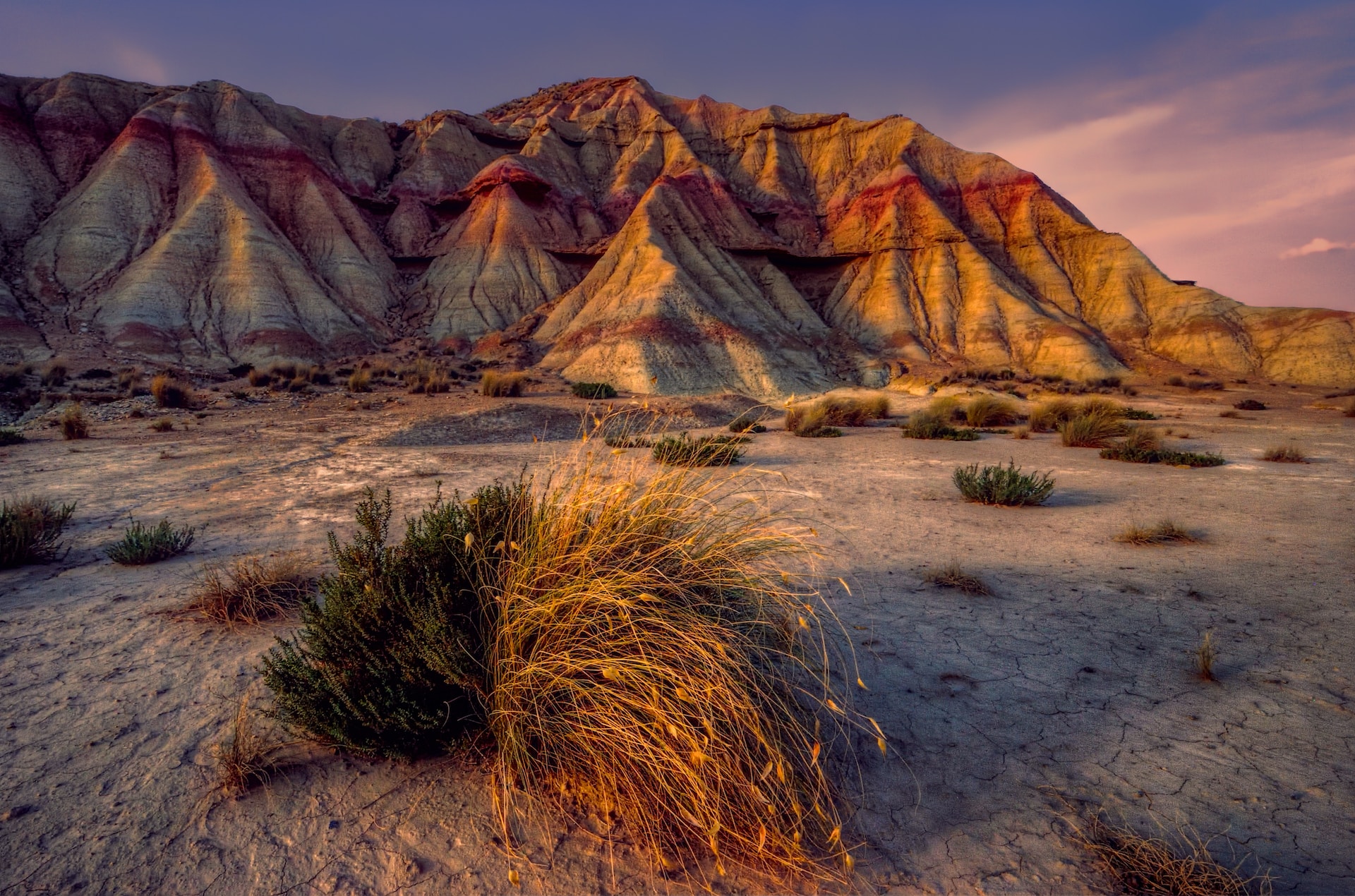Europe is definitely not a continent where you can find many arid places. The majority of deserts in Europe are located in Spain and surprisingly in Poland. In this article, you will find information about 13 desert-like areas. The list is not complete, there are some more dry landscapes but not as big and sandy as the ones introduced to you.
Corralejo Sand Dunes – Canary Islands
Corralejo Sand Dunes is located in Corralejo Natural Park in the Canary Islands. They spread across approximately 10 000 hectares. They stretch along the coast and create a beautiful juxtaposition of golden sands against the turquoise waters of the Atlantic Ocean. The winds that blow here carry particles of sand from the Sahara Desert and deposit them along the coastline thus giving rise to the dunes. Despite the dry environment, there are many plants and animals. Some of the plants that have adapted to this harsh environment include sea lilies, thorny shrubs, and other drought-resistant species.
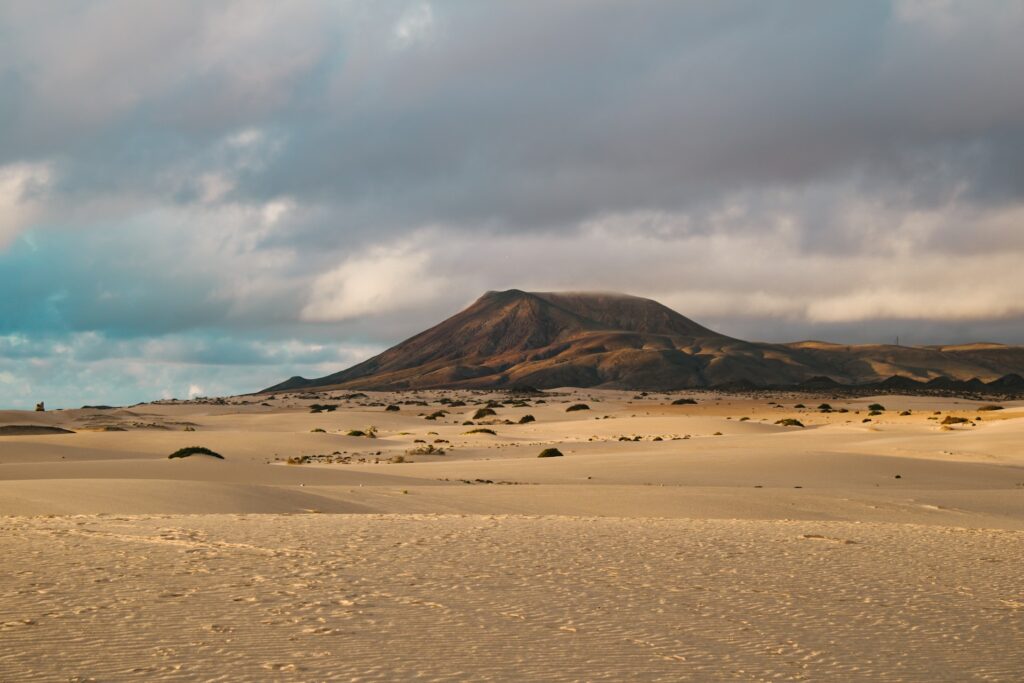
Bardenas Reales – Spain
Semi-desert region or badlands located in southeast Navarre and made of chalk, clay, and sandstone. Thanks to water and wind erosion many interesting shapes, plateaus, canyons, and hills (cabezos) exist here. The place belongs to the UNESCO Biosphere Reserve. The region actually hosts a surprising diversity of plant and animal life like shrubs, grasses, wildflowers, vultures and eagles. Some of the most iconic spots include the Castildetierra and Pisquerra plateaus, as well as the Rallon viewpoint. Over the centuries, Bardenas Reales has been utilized for agriculture and grazing, with traditional farming methods adapted to the challenging environment. The influence of human activity is visible in ancient structures like ermitas (small hermitages) and the remains of defensive walls.
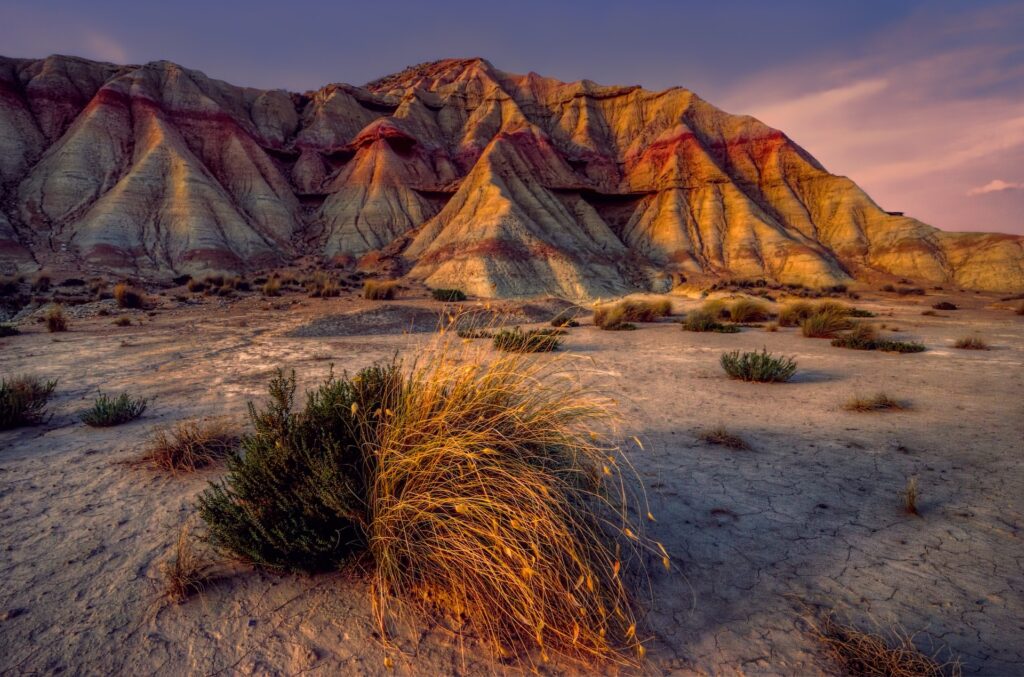
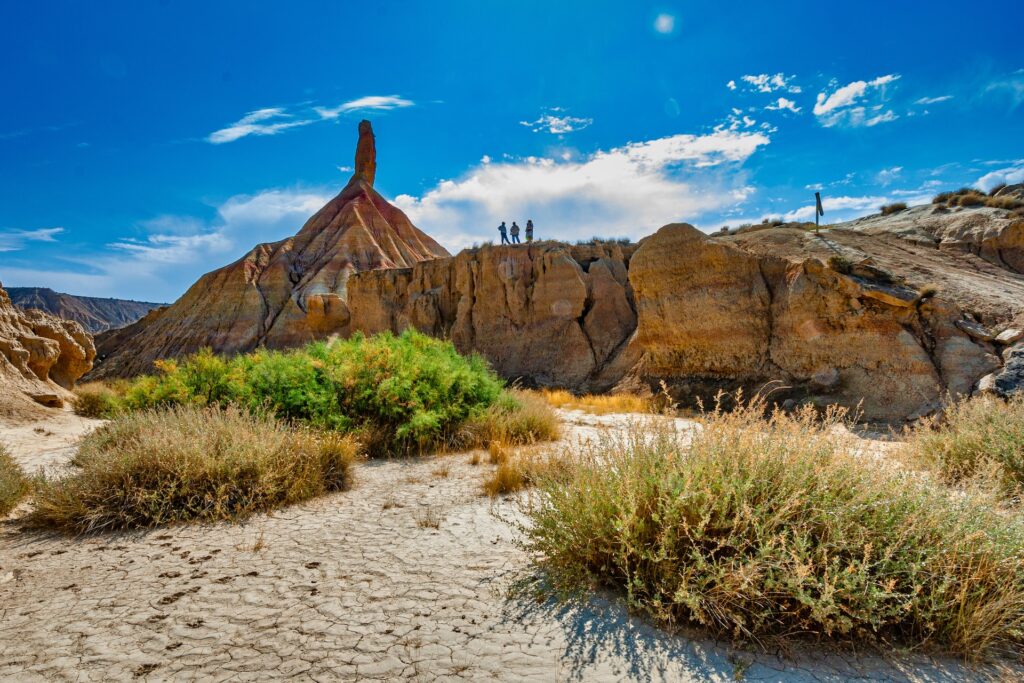
Monegros Desert – Spain
The list of deserts in Europe continues with Monegros. It is a semi-desert in northeastern Spain. The place consists of plains, sand dunes, and rocky outcrops, a mix of barren areas and sparse vegetation. An annual electronic music festival happens here in mid-July called the Monegros Festival. The summer festival’s original name was Groove Parade and launched in 1992. A windowless hall with graffiti, the main stage with the name Flarida, spreads across 3,000 square meters.
Tabernas Desert – Spain
The semi-arid landscape that has captivated both filmmakers and travelers alike. The desert has been used as a backdrop for numerous famous Western films and other movie genres. Often referred to as “Europe’s Hollywood.” Iconic films such as “A Fistful of Dollars” and “The Good, the Bad, and the Ugly,” directed by Sergio Leone were filmed here. Also, the sixth season of the TV series Game of Thrones was shot in Andalusia to Catalonia including the desert. Within the Tabernas Desert is the Oasis of Almería, an area of lush vegetation and natural springs that contrasts starkly with the surrounding arid landscape.
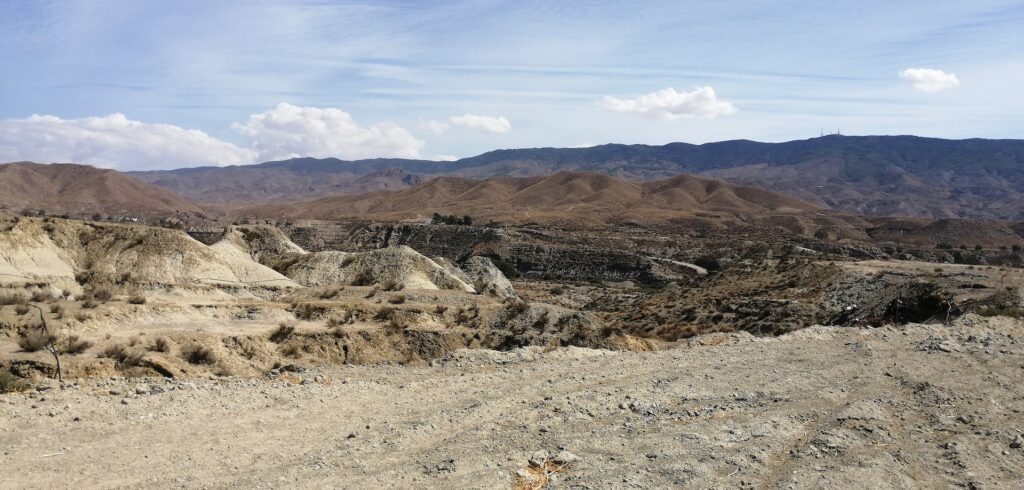
Accona Desert – Italy
Located in the heart of Tuscany, Italy, the desert is a lesser-known yet captivating semi-arid region. Striking badlands, deep canyons, and unique rock formations are very typical for this desert. The region has become a treasure trove of prehistoric remains, including fossils of marine creatures that once inhabited the area when it was an ancient sea. Nearby the desert are two interesting and important places. The town of Asciano has a lot of medieval architecture and charming streets. Crete Senesi on the other hand has many rolling clay hills.
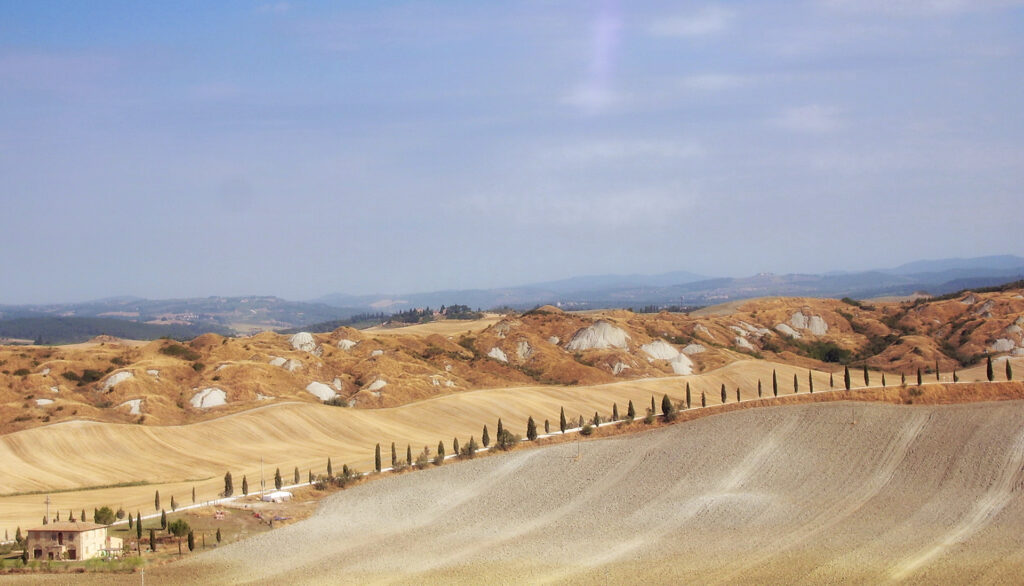
Dune of Pilat – France
A remarkable natural wonder that stands as Europe’s tallest sand dune located on the southwestern coast of France. It rises majestically above the shores of the Atlantic Ocean thus creating amazing views and a dynamic ecosystem. The dune reaches heights of up to 110 meters (360 feet) above sea level. Its immense size and grandeur make it a standout feature along the Aquitaine coastline, overlooking the Bay of Arcachon. The place is in a constant state of flux. Visitors can indulge in activities such as hiking, sandboarding, and paragliding, making the most of the dune’s exceptional setting and recreational potential.

Sands of Đurđevac – Croatia
Sometimes called Croatina Sahara and Bloody Sands. It is an area of sand dunes in the eastern part of the city of Đurđevac. What you can find there is a large number of endemic species, unique flora and fauna. The sands represent about 20 hectares and since 1963 the place is considered to be a botanical reserve.
Pobiti Kamani – Bulgaria
Often referred to as the “Stone Forest,” is a unique and mesmerizing natural phenomenon located in northeastern Bulgaria. The place features a collection of natural stone columns, some of which are 7 meters high and spread across a vast sandy terrain. These stone columns resemble tree trunks and are made of limestone and sandstone. Archaeological evidence suggests that the area might have been used for rituals and religious ceremonies during ancient times.
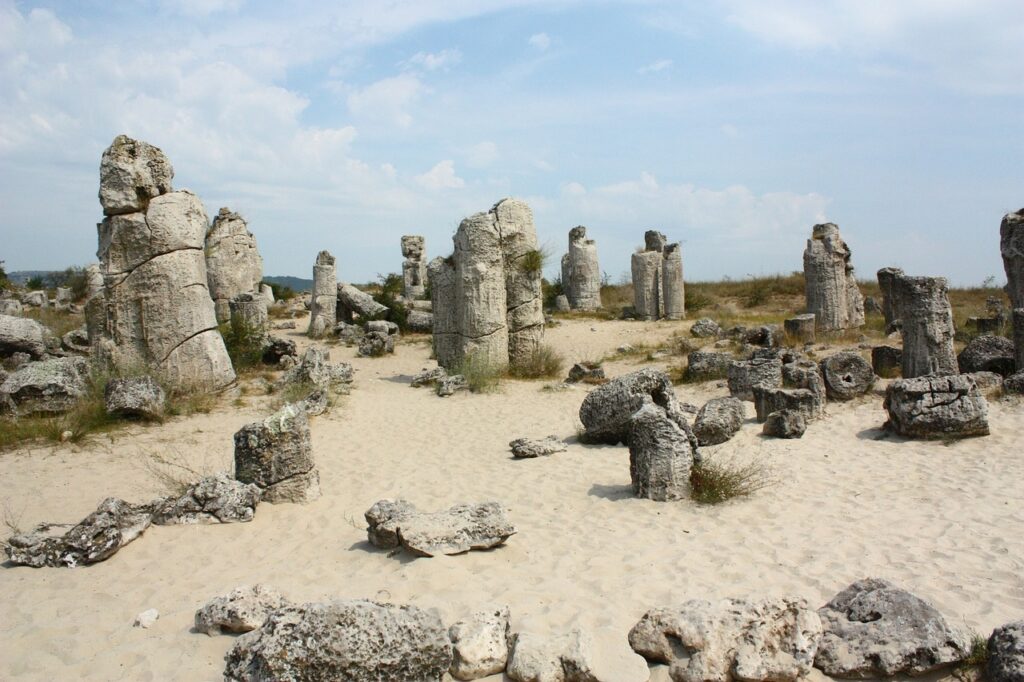
Pachies Ammoudies of Lemnos – Greece
Sometimes also called Lemnos Desert the sand dunes are located on the island of Lemnos and they spread across 70 decades. The desert is home to some animals and plants. For example, you can see here wild rabbits, especially around sundown, or when talking about plants, white lilies spread around, and at the edge of the desert olive trees can be found.
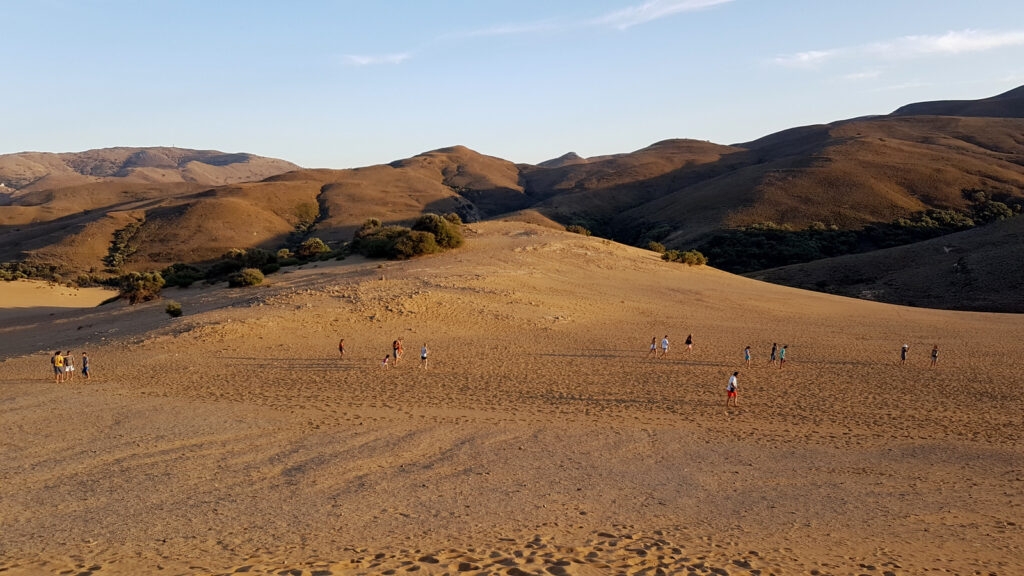
Błędów Desert – Poland
Situated in the southern part of Poland in the Silesian Highlands. The desert spreads across 32 km, while the sands have an average depth of 40 m up to 70 m. The desert is mostly the result of human activity and from the beginning of the 20th century, it was used as a military proving ground.
Kozłow Desert – Poland
Situated in the Lower Silesian Forest near the village of Kozlow. It is part of the Przemkowski Landscape Park. The desert is the result of military activity in the region mostly rocket exercises from the 1920s onwards. It speeds across approximately 20 hectares and consists of two parts, a larger northern section and a smaller southern.
Siedlec Desert – Poland
It is a sandy area near the village of Siedlec in southern Poland. It was formed as the result of sand-mining operations. The sand dates back to the Jurassic era. It spreads across 30 hectares, 5 hectares are just pine trees planted in 1960. The average height of dunes is 30 meters. According to one legend, it is some people believe the desert was formed when a sorcerer escaped the Devil and the gates of hell thus leaving the area scorched. Sometimes the desert is used for motor sports or local festivals where people dress up like beduins.
Šranecké piesky – Slovakia
The desert-like area is located in the Malacky region near the village of Plavecký Mikuláš. It was created when the wind speaded the sands from the Morava River more than 2.6 million years ago. During the week and on some weekend days there is military training. Before you decide to visit this place always check if there is any military activity happening. Maria Theresa gave the order to plant many pine trees to reduce the spread of the sands. The desert spreads across 570 km and is easily accessible by car. But there is no sign except the parking lot. The place is a great area for urbex since there are many old tires, or severely deteriorated heavy concrete covers. There are even two oases – small lakes.
Deliblatska Peščara – Serbia
The last from the deserts in Europe list is the Deliblato Sands, a remarkable natural area located in northern Serbia. It is the largest sandy terrain in Europe. It was created after the withdrawal of the Pannonian Sea. The desert covers an area of approximately 300 square kilometers (115 square miles). Dunes height varies from 70 to 200 meters. Hiking, birdwatching, and photography are popular ways to explore the dunes and connect with nature. The place has been used as a backdrop for many Serbian and international films, for example, Battle of Kosovo, The White Suit, and Genghis Khan.
Sources:
https://en.wikipedia.org/
https://www.tripadvisor.com/
https://www.atlasobscura.com/places/lemnos-sand-dunes

About Author
Freya
Photographer, artist, content creator, and a solo female traveler since 2017.

